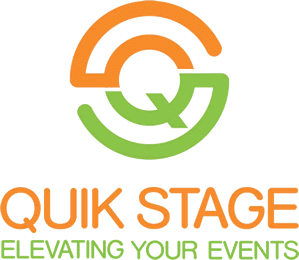By Mark W. Knox
In 2022, the need for educational institutions everywhere to build effective digital and hybrid learning environments will continue to be top of mind. Digital classrooms are embracing integrated technologies that help facilitate student learning and connectivity throughout the school day, while also helping simplify tedious aspects of a teacher’s experience so that they can focus their time and efforts on supporting student learning.
Among these significant technologies are projectors, which educators have been using for decades because they’re an effective, budget-friendly display technology. Not only do they enable primary and secondary schools to present multimedia content that engages students and promotes visual learning, but they also encompass various scenarios that include in-person, hybrid and distanced learning situations.
While there is no one-size-fits-all way to choose the ideal projector for your schools and classrooms, determining and maintaining the right choice depends on the size and shape of the area in which you plan to use each projector, as well as the number of hours you’ll run it and the type of imagery you plan to project.
The primary factors to determine as a first step will be to choose the projector’s location and where it’s going to be installed. This should be based on the design of the room, customer priorities and lens throw distance calculations, which all depend on the location of your projector. However, when assessing which projectors will best fit your school’s needs, K-12 technology leaders have many other factors to consider.
Let’s take a closer look at two primary considerations:
What is your usage model?
Education leaders must determine the usage model, meaning how many hours a day will your projector be on? The average annual state mandated instructional hours for K-12 schools is 1,000 hours per year. However, if yearly usage is operated 8 hours per day, 5 days per week, 38 weeks per year – this would call for 1,520 hours per year. Understanding where your institution falls will determine the life of the lamps and life of the projector required to fit your needs.
What is your technology refresh cycle?
The technology refresh timeframe for a classroom projector is primarily driven by the model’s estimated life, the length of the warranty and technology advances, which is key when considering how to determine the projector model. For example, common K-12 technology refresh cycles for projectors fall between 4 to 6 years. Even in extreme use case scenarios, the number of hours logged on K-12 projectors at the end of year 6 is 9,120 hours.
Other fundamental projector considerations include:
Light Source Life Lamp vs. Laser
Laser projectors are a much more sophisticated technology, capable of providing a better educational experience. The primary benefits of laser projection include higher contrast and resolution, improved colors, and the ability to scale images to very large sizes. These benefits make laser projectors a perfect fit for K-12 theaters, gymnasiums or other common areas where students gather for presentations or events.
Although laser projectors have an estimated life of 20,000 hours, having no filter or bulb to replace, they can be up 50% more expensive than equivalent lamp-based classroom projectors under 4,500 lumens. However, we should note that the benefits of laser projects could outweigh the cost by boosting productivity since they are easier to set up and educators can use them without wasting time to troubleshoot the connection.
In addition, many laser projectors require no watts to warm up or to load software, and some are technology agnostic, so they integrate well with any device. On the other hand, lamp projectors are significantly more cost-effective up front, with some lamp projectors having an estimated life of 10,000 hours or more. There are also eco-friendly model options, which can double the lifespan up to 20,000 hours.
Other Projection Considerations
The next determining factors to keep in mind when choosing a projector include brightness, warranty and networking. In terms of brightness, in most K-12 classrooms, a projector with 4,000 to 4,500 lumens is sufficient. This level of brightness ensures crisp and vivid images that keep costs low. Warranty lengths will vary among manufacturers, but to avoid unexpected repair costs, educators should choose a three-year warranty or longer to avoid unnecessary repair expenses.
Finally, network capabilities are key for large deployments, and placing a projector on the network can allow remote management, control, scheduling and reporting capabilities for administrators to ensure seamless connectivity and workflow across devices.
It’s also crucial for educators to look to invest in projection technology that is industry specific to the education sector. The projector market is an expansive one, offering countless options, so it’s important to keep in mind that selecting a projector specifically designed for educational purpose will keep costs at bay, since they are built with a focus on lamp life.
Making Your Decision
As you take the steps to determine which type of projectors will be suitable for your K-12 learning environment, keep these tips in mind to ensure that you’re not overspending your technology dollars on unnecessary or inadequate features.
- Determine your refresh cycle by estimating how long the projects are likely to be used in your schools before being replaced.
- Take the time to find projector models that have an estimated lifetime at least as long as your estimated refresh cycle
- Find models that fit your needs in terms of light source, brightness, networking and warranty – as well as any other features.
Also, keep in mind that technology advances move quickly nowadays, so you may end up replacing a projector before it reaches the end of its expected lifetime.
In summary, projectors are just one type of tool that can help build and enrich K-12 digital learning and hybrid class environments. These solutions can increase student engagement and support a high-caliber educational experience.
Ultimately, finding the ideal projector for the needs of the classroom will rely on first pinpointing the size of the space where it will be utilized, the location of the projector and its usage application, and then applying those necessities to narrow down your choices to the ideal solution.
Mark W. Knox is vertical solutions sales consultant for Sharp NEC Display Solutions, a manufacturer of computer monitors and large-screen public-information displays, www.sharpnecdisplays.us.





